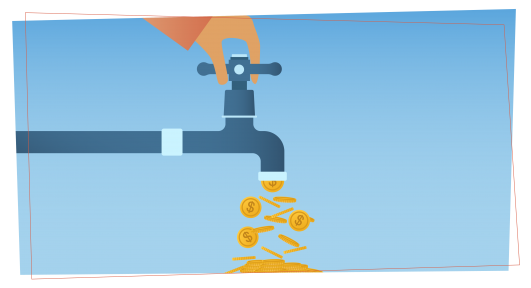5 Steps to Optimizing A Services Business from Brogan Renshaw, Founder of FireWire Digital
Pro Tips
Professional services, especially digital advertising services, are widely popular due to the low overhead and how quickly they can go to market. But this can be a double-edged sword for an agency owner who is trying to offer as many services as possible. It’s far too easy to overpromise and underdeliver if you lack direction.
In mid-2017, SEO specialist Brogan Renshaw saw this pitfall first-hand at the general marketing firm he was working at.
At the time, he was unable to deal directly with clients and his superiors were overpromising SEO results, in part because they didn’t understand the discipline. When he left the company, Brogan realized that he could land clients on his own. So he investigated the market and discovered that there were no single-service agencies focused on SEO in his region of Australia.
When he noticed the gap in the market, he decided to start his own agency, FireWire Digital. While he specialized in SEO and Google ads, Brogan also took on some social media ad projects for initial revenue. But within 12 months, he was able to drop social ad services and focus solely on SEO.
We spoke with Brogan to learn more about how he manages the several expenses that are associated with SEO and how he’s grown his business.
1. Narrow down your services
Brogan’s passion was in SEO, and while he initially needed to take on unrelated projects to get his business started, he rapidly narrowed his services list. Failing to niche down and provide specific, quality services is a huge problem for businesses. And that’s true even outside of the professional services industry.
In fact, one of the main reasons businesses fail is lack of expertise or poor marketing—two problems that stem from a business owner trying to do too much at once.
“I often tell people, from several businesses I've worked with, that businesses that succeed can succeed despite their owners,” says Brogan. “When you specialize, you're not trying to be everything for everyone. You’re not stretching yourself too thin.”
In keeping his services list small, Brogan has built a thriving and highly specialized agency that consistently delivers quality products.
2. Choose your tools wisely
Another benefit of niching his services list is reducing overhead costs. SEO tools are expensive, and there are thousands of variations. One of the biggest barriers to entry is the cost of premium software.
For example, the popular keyword and market research tool SEMRush can cost more than $500 a month. And while there are many free options, they don’t cover everything an SEO specialist needs to do their job.
“I was lucky that when I started, I had some initial income and could purchase some of the basic tools,” says Brogan. “At the time, I was probably only using about 20% of the tools we have now. The costs of tools are massive.”
The key, Brogan tells us, is that business owners need to be selective and strategic when choosing their first tools. The focus should be on what combination of software will provide the best results for the client.
3. Build a second stream of income
Another critical aspect is setting prices. Services agencies can choose to charge by the hour, project, or a percentage of the revenue generated.
While Brogan charges on a project and retainer basis, he also recently established an affiliate marketing component to his business. His team always had the skills necessary to implement it but lacked the time and resources. With the main business thriving, Brogan decided it was time to finally bring in this second stream of income.
“It's almost like a separate business within the company. You have your client-side, and then you have the affiliate-side,” says Brogan. “What we like to do is buy an existing site that's a little bit established and then build it up.”
Brogan’s affiliate marketing program is based on the following steps:
Buy a site
Optimize it
Add quality content
Sell the website again.
These websites generally sell at 30-40 times their monthly revenue, which offers a significant second income stream. For example, if Brogan has a website that brings in $100 per month, he could sell it for $3,000. Ideally, he works on generating $1,000 in revenue for his affiliate sites, so he can sell them for closer to $30,000.
Good candidates include websites that are already fairly established. A website should have some existing content and traffic with the potential to grow. At this stage, it’s important to conduct an SEO audit to map out both potential problems and opportunities. For every potential investment, Brogan has to ask questions like:
What is the website’s capacity?
How's your website going to rank?
Who are your competitors?
Are you targeting the right words?
Are you doing the right type of content?
Once Brogan buys a website, he optimizes the technical SEO aspects, adds additional quality content, and establishes affiliate connections with the website. Over time, the website’s affiliate revenue rises, and all Brogan needs is a buyer.
4. Keep an eye on expenses
Between his regular clients and affiliate marketing program, Brogan has been able to steadily grow his business. Client retainers provide access to immediate and predictable capital. The affiliate websites act as long-term investments, with their current affiliate revenue offsetting a portion of the expenses. Together, the two income streams provide more flexibility and prevent revenue from drying out during slow periods.
“I think that as a business owner, you have to track cash flow. I mean, otherwise, you're just burying your head in the sand, and you're asking for problems”
Agencies are regularly subjected to dips and peaks when it comes to cash flow. Due to the fluctuating nature of the business, Brogan focuses on six-month projections when monitoring his cash flow.
“Even when you have a general average of new clients coming in, you've also got to factor in what the drop-off rate is, and try and work that out,” Brogan notes.
He also keeps a granular list of all of his business’ monthly expenses and reviews software usage each month. Any platform that hasn’t been used for the last three months gets axed immediately.
5. Grow your business through cash flow tracking
Whether you’ve just started your business or you’ve been in the game a while, understanding your cash flow at a glance is critical for success. Not only can you make better decisions, but it’s easier to spot expense creep and unused software subscriptions.
“I think that as a business owner, you have to track cash flow. I mean, otherwise, you're just burying your head in the sand, and you're asking for problems,” says Brogan. “Around 80% of businesses fail in their first couple of years, and I'd say that's often down to the management of the money.”
Cash flow projections and easy-to-understand visual reports are vital to making strategic decisions faster and keeping your business healthy.
Start forecasting with Pulse
Pulse helps businesses across industries manage their money efficiently and provides clear visual indicators to help owners spot potential problems.
Get Pulse free for 30 days and see how clear cash flow tracking can boost your business finances.
Want to read more stories like Brogan’s? Subscribe to the Pulse Newsletter, a monthly publication with entrepreneur interviews like this, cash flow advice, and more.


